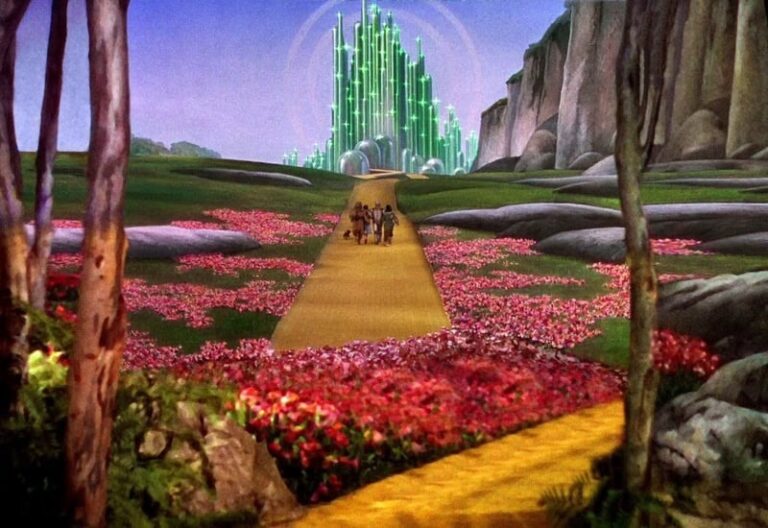a beginner's guide to IMAX
IMAX is a premium film format known for its large screens, high resolution, and immersive viewing experience. Developed in the late 1960s, IMAX revolutionized cinema by offering unmatched visual and auditory clarity. It has become the go-to format for blockbuster films, with directors like Christopher Nolan and James Cameron using IMAX to create epic-scale movies.
Published by: CinemaWaves Team | Filed Under: Film Blog
History and Technological Development of IMAX
IMAX was firstly developed in the late 1960s and early 1970s by a Canadian company called IMAX Corporation. The beginnings of IMAX can be traced to the Expo ’67 in Montreal, where multi-screen film projections fascinated audiences and enthusiast alike. Inspired by this, several filmmakers and engineers wanted to create a more immersive and expansive viewing experience that would exceed the limitations of the standard film formats of the time.
In 1970, IMAX made its public debut at Expo ’70 in Osaka, Japan, with the film “Tiger Child,” directed by Donald Brittain and produced by IMAX co-founder Graeme Ferguson. This debut showcased IMAX’s ability to produce much larger and clearer images, thanks to its unique 70mm film format, which ran horizontally through the projector, as opposed to the conventional 35mm film that ran vertically. This horizontal orientation allowed for a significantly larger image area, resulting in higher resolution and a much larger projected image.
Throughout the 1970s and 1980s, IMAX technology advanced significantly, with engineers and filmmakers refining projection systems, screen design, and film production processes. Custom-built IMAX theaters featured giant screens, typically measuring 22 meters wide by 16 meters high, offering a more immersive experience than standard cinema screens.
Initially, IMAX was primarily used for educational and documentary films in museums and science centers, with films like “To Fly!” (1976) and “Blue Planet” (1990). A major technological leap occurred in the late 1990s and early 2000s with the introduction of IMAX DMR (Digital Media Remastering), allowing standard 35mm films to be converted into the IMAX format. This development brought mainstream Hollywood films into IMAX, starting with “Fantasia 2000” and followed by live-action hits like “Apollo 13” and “The Matrix Reloaded.”

IMAX Digital and Laser Projection
As digital cinema technology progressed, IMAX evolved by adopting digital projection systems, which enabled more flexible and cost-effective distribution of its films. In 2008, IMAX introduced its first digital projection system, which used dual projectors to maintain the high resolution and brightness standards while allowing theaters to move away from bulky film reels. This transition to digital projection made it easier to install IMAX systems in multiplex cinemas, leading to a significant expansion of IMAX theaters globally.
The next major innovation came with the introduction of IMAX with Laser in 2014. This system used advanced laser projectors capable of displaying a wider color gamut, higher contrast ratios, and brighter images than traditional digital projectors. It also supported both 2D and 3D formats and could be used on the largest IMAX screens, enhancing the visual experience.
IMAX vs Standard Format
IMAX and standard formats offer distinctly different cinematic experiences, primarily through their technical specifications. IMAX boasts larger screen sizes, usually extending from floor to ceiling and wall to wall, significantly larger than traditional screens. This expansive size is paired with a unique aspect ratio of 1.43:1 or 1.90:1, compared to the standard 1.85:1 or 2.39:1, allowing for a much taller and more immersive image. It utilizes high-resolution cameras and projection systems, providing exceptional image clarity and detail. The enhanced brightness, contrast, and color depth of IMAX screens further elevate the viewing experience, making it ideal for epic blockbusters and visually stunning films.
In contrast, standard format theaters, while more widely available and cost-effective, offer a more conventional viewing experience. These screens typically adhere to the 1.85:1 or 2.39:1 aspect ratios, which are well-suited to a variety of film genres but lack the sheer size and immersive quality of IMAX. Standard theaters also use digital projection systems, which, while capable of delivering high-definition images, do not match the exceptional resolution and brightness of IMAX. The audio experience in standard theaters is generally robust but not as enveloping as the IMAX sound system, which uses proprietary technology to deliver precise and powerful audio.

IMAX and Hollywood: Famous IMAX Movies
The partnership between IMAX and Hollywood has been pivotal in shaping modern cinema, transforming the way films are made and experienced. Filmmakers like Christopher Nolan have played a significant role in this evolution, using IMAX cameras extensively for “The Dark Knight” (2008) and “Interstellar” (2014). Nolan’s innovative use of IMAX for key sequences, including intense action scenes and sweeping vistas, highlighted the format’s capacity to enhance narrative storytelling, offering audiences a deeper level of immersion beyond mere spectacle.
Other directors, such as James Cameron with “Avatar” (2009), J.J. Abrams with “Star Trek” (2009), and Denis Villeneuve with “Dune” (2021), have also embraced IMAX for its ability to create visually stunning, immersive experiences. IMAX has thus become synonymous with blockbuster filmmaking, serving as the preferred choice for movies that aim to deliver a visually stunning and immersive experience.
Legacy and Influence of IMAX
IMAX has redefined the cinematic experience, setting new standards for visual and auditory immersion. It has challenged filmmakers to think differently about how they use the frame and has encouraged innovation in camera technology and film production. The format has become a symbol of cinematic spectacle, associated with high-quality, event-level viewing experiences. Its role in pushing the boundaries of what is visually possible in a theater setting has made it a preferred format for both filmmakers and audiences who seek an unparalleled moviegoing experience.
Refer to the main page for more educational insights on filmmaking and cinema history.
Cinematography is the art and craft of capturing visual images for film or digital media. It involves the use of cameras, lighting, composition, and movement to tell…
Cinematography is the art and craft of capturing visual images for film or digital media. It involves the use of cameras, lighting, composition, and movement to tell…
Technicolor’s origins trace back to the 1915 when Herbert Kalmus, Daniel Frost Comstock, and W. Burton Wescott founded the Technicolor Motion Picture. The company…
In the mid-1990s, a group of Danish filmmakers, led by the visionary minds of Lars von Trier and Thomas Vinterberg, embarked on a cinematic journey that would disrupt…
Postmodernist film emerged in the latter half of the 20th century, rooted in the broader cultural and philosophical movement of postmodernism. It started as a reaction…
At a tiny Parisian café, the adorable yet painfully shy Amélie (Audrey Tautou) accidentally discovers a gift for helping others. Soon Amelie is spending her days as a matchmaker…






